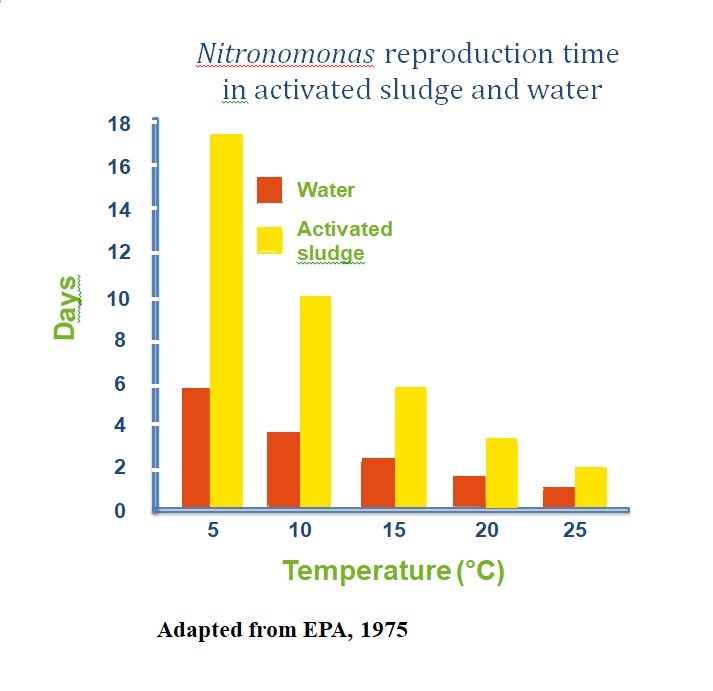Why Inoculate?
Nitrifying bacteria use ammonia as their food. Since ammonia (NH4) does not contain glucose, as for heterotrophic bacteria, it provides very little energy. Consequently, nitrifying bacteria such as Nitrosomonas sp. are very slow growing organisms. Furthermore, in cold water, their growth rate declines even more. The figure below illustrates how cold water increased the number of days for these bacteria to reproduce in a wastewater treatment (sludge) and water. Six days at 5◦C is long compared to heterotrophic bacteria, which reproduce in about 30 minutes at 25◦C!
So, if you try to establish a new biofilter into a recirculating system, waiting until the surfaces of the biofilter are well coated with these good bacteria, consider waiting for about one year. Ammonia fluctuations are sure to happen during that year.
Further, even when a biofilter is well established, the reaction of these slow-growing bacteria to ammonia fluxes is slow. This occurs when a large load of aquatic organisms is transferred into an empty tank, for instance. When this happens, you should expect a temporary rise in the level of ammonia.
The good news is that at AQUABIOTECH, we have known this for a long time. All of our biofilters are pre-coated with live seawater nitrifying bacteria before they are put in service. We have even developed a Biofilter Inoculation Station (BIS) designed for aquatic research. It automatically feeds the biofilter with increasing loads of ammonia until the bacterial population demonstrates that it is ready to work.




